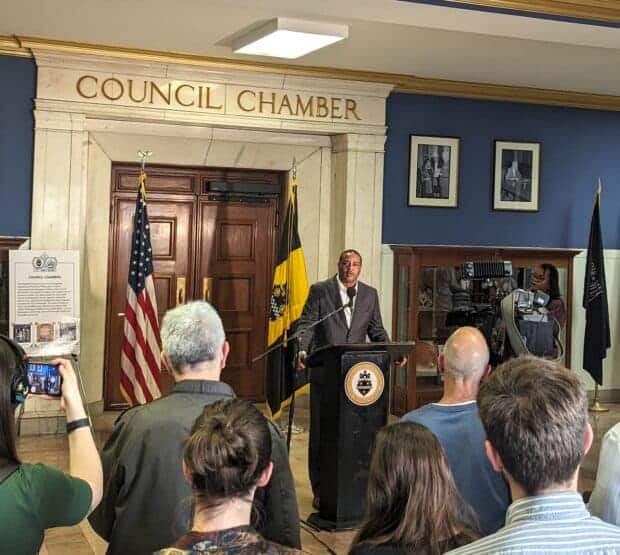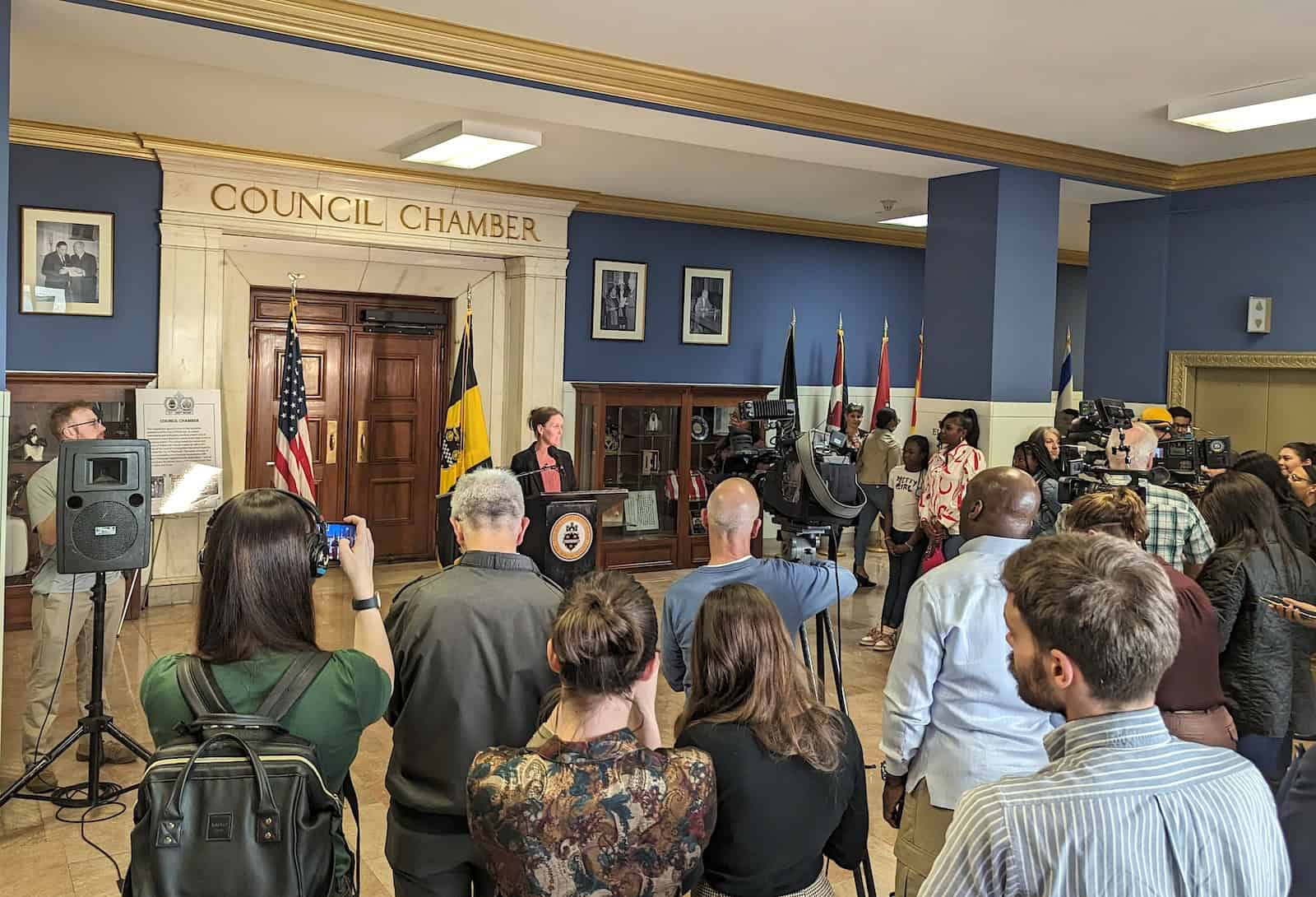
Traffic fatalities and serious injuries are preventable. Mayor Gainey has put the policy in place to end them.
UPDATE (3/19/24): City Council has formally passed the Vision Zero Resolution!
On Monday, March 4, Mayor Ed Gainey announced a major policy change for Pittsburgh with the announcement that the City will commit toward the goal of zero traffic fatalities.
This brings Pittsburgh into “Vision Zero,” an international movement, where cities across the globe are working to address the epidemic of road fatalities and serious injuries. A Vision Zero Action Plan outlines a holistic approach, encompassing multiple city departments, to eliminating all traffic fatalities in a set period of time. It requires a focused, multi-pronged approach to leadership, enlisting tools across multiple City Departments.

“We’re doing everything we can to make this the safest city in America.”
– City of Pittsburgh Mayor Ed Gainey

In coordination with Mayor Gainey, Councilwoman Barb Warwick will introduce a resolution to City Council tomorrow (March 5, 2024) to enshrine the commitment to Vision Zero and provide some specific first steps that the City will take toward achieving the goal.
With this resolution, some immediate short term changes we anticipate are going to be:
> A Fatal Crash Response team will be formed
> An all-department Vision Zero Task Force
> The Launch of the High Injury Network Map, which will guide their investment of time and effort into reducing fatalities
Earlier in the day, DOMI presented to their first Complete Streets Biennial Report to City Council, which included a lot of supporting stats for people to understand why this Vision Zero commitment is important.
“Last year, homicides went up 20%. Meanwhile, traffic fatalities went up 71%… Let’s make Zero traffic deaths a reality so we can all get around Pittsburgh in one piece.”
Councilwoman Barb Warwick
Between 2010 and 2022, we’ve lost 245 Pittsburghers to traffic violence, 64 of whom were walking, with another eight people who were riding bicycles, comprising roughly a third of all traffic fatalities. In the last five years alone (2018-2022), drivers seriously injured 604 Pittsburghers, or one person every three days, in a moment that upends the lives of victims and their families.
In a city where nearly 25% of households do not own a motor vehicle, working toward zero traffic deaths, with a focus on equity and pedestrian dignity, aligns with the Mayor’s vision of safety in our city. Reducing fatalities and serious injuries can also help correct the street engineering mistakes of our past, as road deaths for Black and brown communities “show an alarming racial gap” compared to better funded neighborhoods, according to a New York Times report.
By reaching for a goal of zero, the Mayor is setting up a framework to show he is committed to ending deaths on our streets by putting policy, funding, education and additional personnel into action to meet that goal. And while a commitment was made today, no exact target date was established for achieving Zero.
These fatalities and serious injuries are preventable. All humans make mistakes, so we need to design our streets in a way where the chances that someone will be maimed or killed because of that mistake is reduced. Secretary of Transportation Pete Buttigieg agrees, and has developed a National Roadway Safety Strategy with five elements to address what he calls a “national crisis” of the needless loss of more than 40,000 American lives per year: safer roads, safer people, safer vehicles, safer speeds and better post-crash care. But we need to do the work locally.
Opportunities on the horizon that can’t be built fast enough

Beginning at our 2014 Member’s Meeting, Bike Pittsburgh has been pushing Pittsburgh’s mayors to adopt a policy toward zero traffic deaths. While other policy goals of ours such as a new bike plan and a Complete Streets policy were achieved, which are integral pieces of the puzzle, we still lacked the bold policy goal of zero traffic fatalities.
Mayor Gainey’s 2021 transition team report, followed by his 2022 public comments after the death of 6-year old Jamel Austin in Glen Hazel, indicated that the administration will be taking this goal seriously. But, we still did not formally commit to the ambitious goal, leading to a BikePGH op-ed in the Pittsburgh Tribune-Review calling to address the crisis.
Late in 2023, President Biden awarded a grant to Pittsburgh, Allegheny County, and the Southwest Pennsylvania Commission from his Safe Streets and Roads for All program to fund the creation of a Vision Zero Action Plan. Once complete, the plan will inform the city and county which roads to focus on, which processes to change, and open us up to more ways to fund these safety improvements. As we currently lack a Vision Zero plan and commitment, the region is currently at a disadvantage for winning future funding to address these road safety issues.
Bike Pittsburgh is glad to see the Gainey Administration make this bold commitment to eliminate traffic fatalities and serious injuries in Pittsburgh. According to a recent poll (Lake Research Partners 2021) one-quarter of Pittsburgh voters say that they themselves have been injured in a crash, while two-thirds say they know someone who has. Not only are these crashes life shattering, they are a huge cost burden to the City of Pittsburgh.
Committing to zero deaths is good policy. Not only will Mayor Gainey’s commitment to zero traffic fatalities help ensure that Pittsburgh families cease getting their lives upended, but it will also open Pittsburgh up to even more funding to create safe streets for all.
To quote Councilwoman Barb Warwick: “Look what speeding, reckless, and distracted driving does for our quality of life. Today we are saying enough is enough.”


